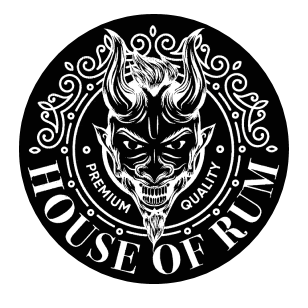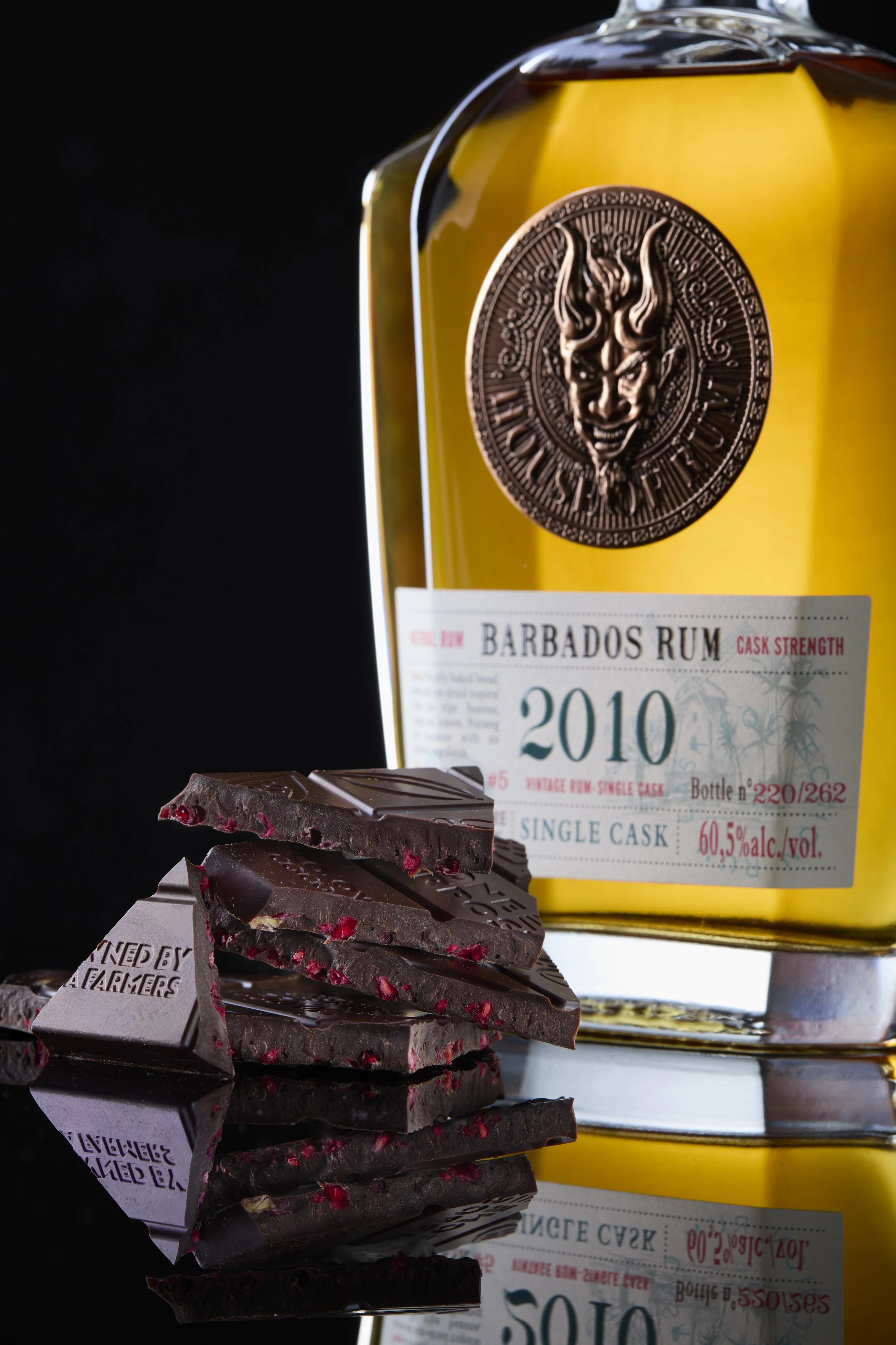RUM AND CHOCOLATE
Indulging in exceptional rum is the epitome of liquid indulgence. Rum’s layered nose embraces a vast aromatic palette, spanning from spices to citrus fruits and from roasted, smoky notes to rich dried fruits. Its vibrant colour, coming in endless shades of gold, narrates its maturation journey in the cask. Its palate is complex and nuanced, yet so comfortingly round.
Barbados 2010
If rum represents the pinnacle of hedonistic drinking, its solid form equivalent is unquestionably chocolate, a food that surprisingly shares with rum numerous similarities in the production process, and complementary flavours too.
Both cocoa and sugarcane – respectively, the raw ingredients of chocolate and rum – thrive in tropical climates, requiring warm temperatures and substantial rainfall throughout their growth periods. Furthermore, both experience a fermentative metamorphosis, post-harvest in the case of cocoa beans, and either after the pressing of the juice or in the form of molasses (mixed with water) in the case of sugarcane. Following the fermentation process, cocoa beans undergo a transformative journey through roasting, a pivotal step to obtain the characteristic flavours of chocolate. Similarly, rum barrels undergo a toasting or charring process that imparts to the wood flavours resembling those found in chocolate, and which the wood will eventually transfer on to the liquid during maturation. With such a number of shared characteristics, rum and chocolate have significant potential to form perfect pairing companions.
Selecting the appropriate style of chocolate to pair with rum is undoubtedly a matter of personal preference, but adhering to certain general guidelines can significantly improve the drinking experience. When dealing with unique bottlings like those from the House of Rum, the key to a superior hedonistic experience lies in carefully selecting the finest-quality chocolate to match the complexity and intensity of the liquid. Ensuring that the sweetness of the chocolate doesn't overpower the drink is equally necessary, as an imbalance in sweetness can result in a harsh and angular sensation on the palate. Sommeliers, for instance, would never pair a classic claret with a Canelet, as the sweetness of this traditional Bordelais pudding may render the wine excessively astringent. A pairing with a young Sauternes would be favoured instead.
Commercially available rums frequently exhibit excessive sweetness due to the addition of high amounts of sugar. Our rums, on the other hand, remain entirely unadulterated, bottled in their natural state, only showing a limited, natural sweetness acquired from the wood during extensive ageing. Therefore, to maintain a harmonious pairing, we recommend steering clear of sweeter chocolates such as white and milk varieties. Instead, opt for fine, dark chocolates with higher cocoa solid content that showcase the real essence of the raw ingredient – much like House of Rum bottlings do.
Barbados 2010
An ideal pairing for House of Rum's Barbados 2010 is a chocolate with a medium-to-high cocoa content, ranging from 75% to 85%. This type of chocolate preserves some of the cocoa’s inherent fruitiness that aligns well with the profile of the best Bajan rum, and our Barbados 2010 boasts a delightful tropical character that complements well the berry and red fruit notes of dark chocolate.
Chocolates with cocoa content from 90% and up to 100%, showcase the pure essence of the raw ingredient. Some can be markedly bitter and are often loved by gastronauts with bold taste preferences. Despite their intensity and potential bitterness however, even the sweeter tooth will find them appealing when accompanied by a great rum. After all, the very purpose of drinks and food pairings is to create a harmonious blend that elevates the overall experience. When paired with higher-proof rums like our Trinidad 2012, a 95% chocolate's bitterness subsides, creating a creamier texture and a burst of flavours on the palate. The aftertaste is notably characterised by the emergence of nutty flavours that remind of ground almonds and amaretto liqueur.
Some flavoured chocolates can complement our rums exceptionally well, too, provided they are made using natural ingredients, with a minimum cocoa content of about 70% and a limited level of sweetness.
Jamaica 2013
Sea salt dark chocolate, for example, can contribute to elevating the drinking experience. Not only is salt the world’s most popular flavour enhancer, it also plays a unique role in diminishing the perception of bitter notes, particularly those arising from tannins. This makes it an excellent pairing choice for wood-forward rums like our exceptional Venezuela 2005. The chocolate's salinity contributes to a heightened smoothness in the rum, and introduces an additional layer of complexity to the overall tasting experience, creating a harmonious and sophisticated blend of flavours.
Bitter orange and other citrus fruits make ideal companions to rum when integrated into bars, or presented in candied and chocolate-coated form. These options harmonise particularly well with our Dominican 2000. Aged for nearly a quarter of a century, this rum has acquired alluring marmeladey and jammy Seville orange undertones, reminiscent of the comforting, indulgent flavours found in fruitcake, which perfectly complement the chocolatey candied citrus fruits.
In addition to extra dark and chocolate-coated citrus fruit, there is a diverse array of chocolate expressions to explore. This includes bars incorporating ingredients such as dried fruits, or spices like ginger. For instance, chocolatiers increasingly experiment with ageing cocoa beans in whisky barrels. With most aged rums spending part of its maturation in ex-Bourbon casks, why not pair our bottlings with a Bourbon-aged chocolate bar instead?



